It’s 35 years old this year, but with its curvy rump and uncluttered design the Mk2 Scirocco is sill pleasing on the eye. Here’s how it came about and some quick tips on how to pick a good one…
Word has it that Herbert Schäfer, head of VW’s newly created design studio at Wolfsburg, wasn’t a massive fan of Giugiaro’s original ‘Rocco which probably explains why, despite having two of his proposed designs for a revised version shortlisted, it was the ‘in-house’ effort that was given the final nod. That said, some of the showcar collaborations between Karmann and Giugiaro look uncannily like the Mk2.
And indeed, some say VW’s designers went even further back to Italdesign’s 1973 Asso di Piccche (Ace of Spades) concept built by Karmann for some of the Mk2 Scirocco’s inspiration. Certainly the rear end looks very familiar!
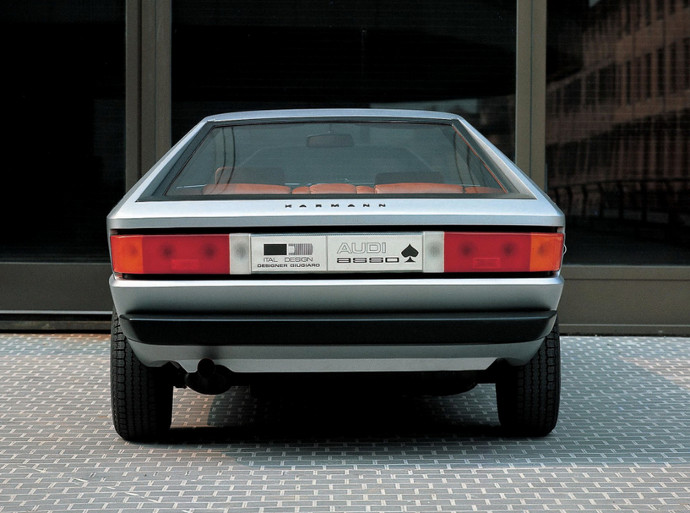
Either way the Mk2 finally broke cover in 1981 and while some argued that it had lost some of its purity, its lines were undisputedly softer and this was borne out by wind tunnel testing which revealed that the drag coefficient of the new car was down from 0.42 to 0.38. The repositioning of the rear spoiler also reduced rear end lift by a not insignificant 60 per cent.
Inside too there were big improvements; there was 10mm more headroom at the front, while at the back there was an extra 18mm. Being 165mm longer than the original, boot space was up as well, with capacity increased by 20 per cent.
The model line up comprised L, LS, GL, GT and GTI. The L was powered by the 1272cc engine, or 1457cc when an S was added. The GL with rev counter, clock and sports steering wheel and additional halogen lamps was available with both the smaller units and an 85bhp version of the 1588cc engine. The GT had the 1.5 and 1.6 units and was distinguished mainly by the huge SCIROCCO transfer in the rear windscreen and four rectangular headlamps. Spec for these sportier models included hip hugging pews, temperature gauge and split rear parcel shelf. The GTi spec mirrored that of the Golf with its 110bhp fuel-injected engine, close ratio gearbox and stiffer suspension.
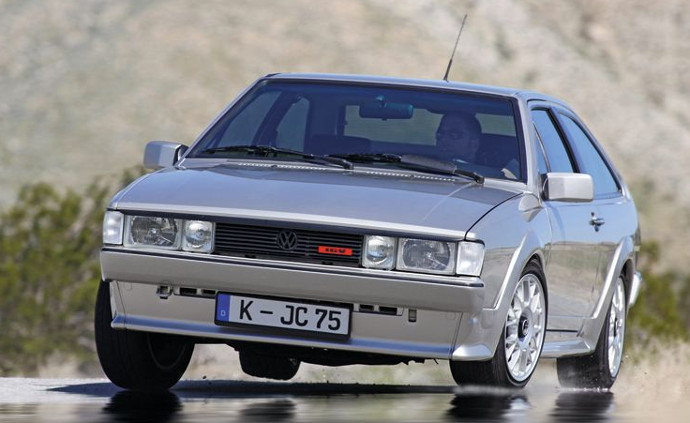
A new 1.8 appeared in 1982 and the 1.5 was replaced by a new 75bhp 1595cc powerplant. At the same time the 1588cc normally aspirated car was replaced by a 90bhp 1781cc version.
Fascinatingly, Volkswagen toyed with the idea of using turbocharging to boost the performance of its GTi models and began testing with the 1.6 in 1981. However, excessive heat and fuel consumption put a premature halt to proceedings. They tried again in 1983, this time using a US-sourced 1.7-litre engine, but despite achieving an impressive 178bhp, the programme was dropped in favour of the multi-valve route – namely the introduction of 16v cylinder heads.
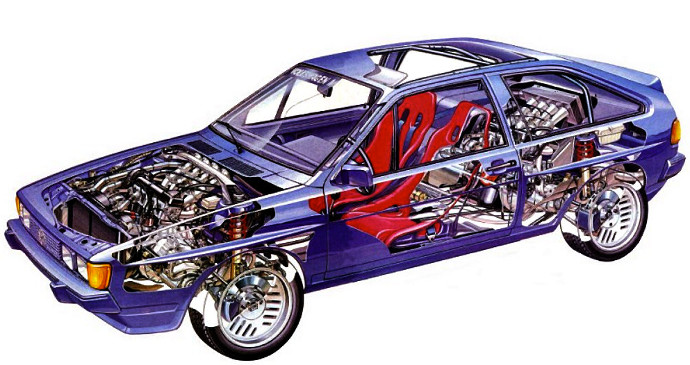
Obviously the most radical Rocco of all was the twin engine monster developed by VW’s Motorsport department (above). Using two bored out 1791cc engines, each producing 180bhp, the ‘Bimotor’ demonstrated the potential of drive to all four wheels. It even went into production using two Oettinger 16v 141bhp engines but alas it was never given the green light for homologation. Instead, performance fiends had to make do with the Storm (from 1984) with its leather interior and Zender body kit.
Relatively tidy original Mk2s Sciroccos are getting thin on the ground now and you’ll need to be picky when buying one. Rust shouldn’t be the issue that it was on the Mk1, but rot can still take hold in the rear arches, sills, the area where the outer sill meets the floor, the bottom of the doors and the inside bottom lip of the rear hatch. Bear in mind, those plastic arch covers and bodykits on later cars can hide all manner of nasties. It’s also important to check the rear beam mounting points, as serious rust here can be terminal.
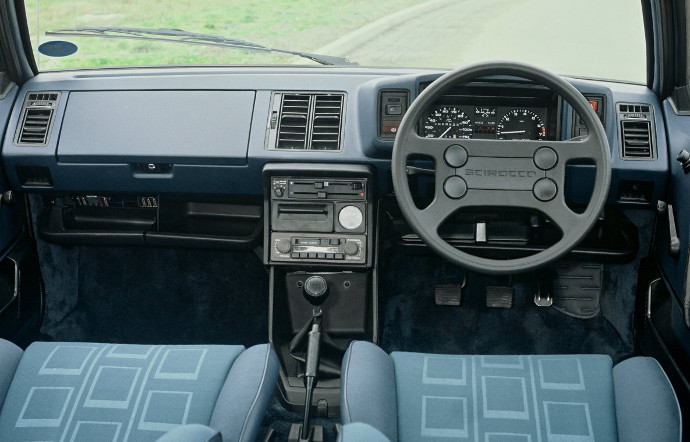
Engines are strong but blue smoke on the overrun points to worn valve stem oil seals. Cars up to mid-1984 had solid lifter tappets which can clatter with age in which case they will either need adjusting or replacing. If a ‘Rocco stalls or struggles to run smoothly on a test drive, don’t rule out the possibility of a rusty fuel filler neck; sadly it corrodes just like the Mk1 and can contaminate the fuel system. If that’s okay, it could be the troublesome Pierburg 2E2 carb. Some owners switch to a Weber, but a better bet is to rebuild the original – kits are available. Incidentally, the cambelt should be replaced at least every 60,000 miles, so quiz the owner as to when it was last done. Don’t forget to inspect the cooling system; beware of any with leaky radiators or cars that show signs of overheating on a test drive. A tell tale sign of head gasket issues is a creamy, mayo like substance when you lift the oil filler cap.
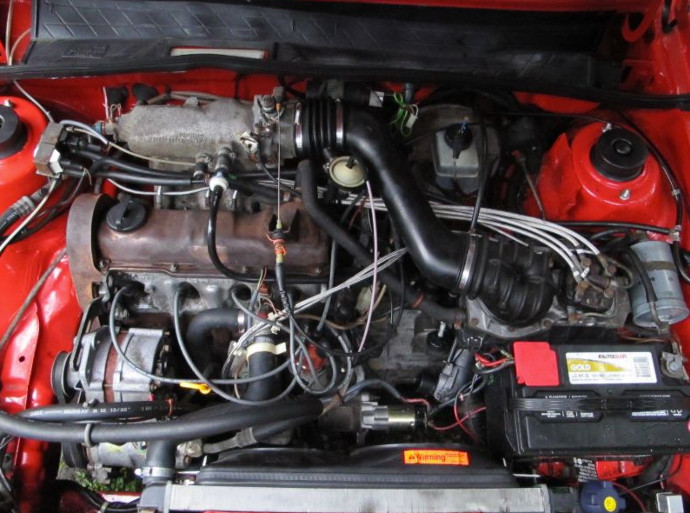
Gearboxes are good, but watch for sloppy changes and rubbish synchro’ when changing into second. The former, like the Mk1 Golf, can easily be rectified by a cheap linkage bush kit. Clutch cables can push a hole in the bulkhead where it passes through, though a repair kit is available so it’s not the end of the world. Otherwise, it’s simply a case of assessing what needs replacing in terms of suspension bushes, leaky dampers, and brake components and budgeting accordingly.
Prices vary enormously depending on condition and originality. There’s quite a bit of interest in the really early pre-bodykit cars, so if you find one of these in nice condition snap it up. As a rough guide, we spotted a one-owner 1991 1.8 GT with bids of £1800 on the nation’s favourite internet auction site when we looked which seemed like excellent value.
Ian
The opinions expressed here are the personal opinions of the author and do not necessarily represent the views and opinions of VW Heritage


ive a 91 scala,,just had work done due to a rusty filler neck,could do with a new one,but hopefully ive patched it up well,had my problem with the cable going thru the bulkhead,used most days for work,iam a decorator,its a jigsaw puzzle to get all my gear in,still a fast runner,ive enjoyed the last 11 years ive had the car,,cheers paul
Hi Paul, yes, I loved my Mk2. It was nice to drive and just so economical! Sadly it had suffered body damage all down one side (which is why I got it cheap) so when some really big jobs came up it just wasn’t economical to repair. That was 15 years ago though and the situation would be a lot different today. The Mk2’s actually a really nice looking car, too.